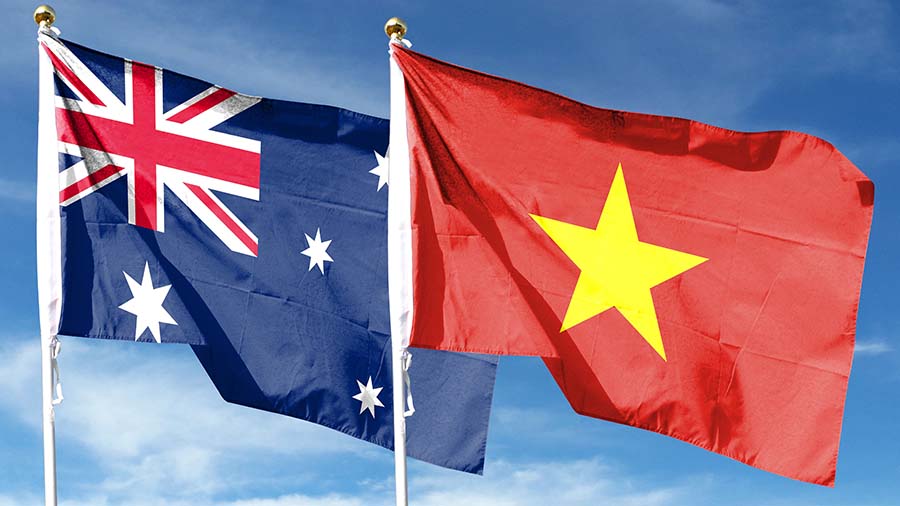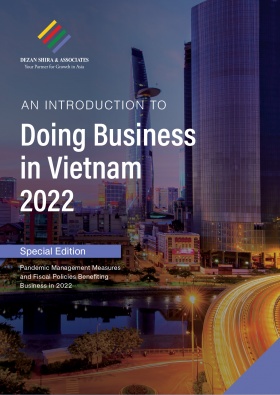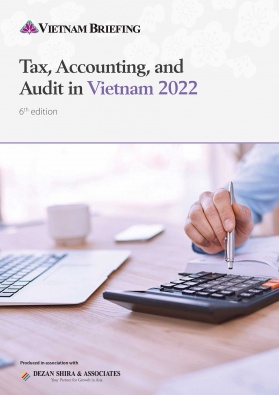The Untapped Potential in Vietnam’s Pre-school Market
- The number of foreign investment projects in Vietnam’s education sector has climbed to 606, with a total registered capital of about US$4.5 billion (accumulated as of May 2022).
- Foreign investment in education has not been commensurate with its potential.
- Competitors in the market, while numerous, showcase the viability of the Vietnamese market rather than provide a serious threat to new market entrants.
Despite being part of Vietnam’s national education system, pre-school education is not compulsory. The government, however, is trying to promote participation in early childhood education, and this has created a range of opportunities for foreign investors.
How is Vietnam’s pre-school market structured?
In general, pre-school education in Vietnam covers children from 3 months to 6 years old, and is divided into three categories:
- nursery (3 months and up to 3 years);
- kindergarten (3 years and up to 6 years); and
- pre-school (incorporating the functions of both nursery and kindergarten, 3 months and up to 6 years).
Public pre-schools versus private pre-schools in Vietnam
The education market can be divided into two main segments: public schools and non-public schools, in which the non-public segment covers both international schools and local private schools.
While the number of public pre-schools is limited, the number of non-public pre-schools, as well as children enrolled in these pre-schools, has been increasing over the past few years.
According to the Ministry of Education and Training, last year, Vietnam had 5.4 million children enrolled in pre-school institutions, an increase of 50,000 children compared to the previous year.
Notably, the proportion of children in the non-public segment reached 23.2 percent, an increase of 1.1 percent compared to the year before.
International pre-schools in Vietnam
To encourage investment in kindergartens and K-12 schools, in 2018, the Government published Decree No.86/2018/ND-CP replacing Decree No.73/2012/ND-CP covering new regulations for foreign investment in the education sector.
Under the old regulations, the proportion of Vietnamese students allowed to study in international schools ranged from zero to no more than 20 percent depending on the level of education.
As a result, it was mainly upper-class families that could afford to send their children to these schools. However, thanks to the new law, middle-class families are also now sending their children to international schools too.
Where are the opportunities in Vietnam’s early-childhood education sector?
The top five cities that had the highest number of pre-school education providers in 2021 are: Hanoi, Ho Chi Minh City, Thanh Hoa, Nghe An, and Binh Duong. All of these cities/provinces are significantly populated.
However, wealthier families in major cities are where the biggest demand for international schools are found such as in Ho Chi Minh City and Hanoi. The others are mostly rural areas and as such they have limited potential as locations for international schools.
Who are the market leaders in early childhood education in Vietnam?
KinderWorld Education Group, Maple Bear – Canadian Kindergarten, Kindy City International Preschool and Sakura Montessori International Preschool have been identified as the major players in the pre-school industry in the Vietnamese market. This is because of the number of projects they currently have in Vietnam, the length of time they have been operating early-childhood education centers in Vietnam and their reputations.
The growth potential of Vietnam’s pre-school sector
Vietnam has one of the fastest growing middle classes in Southeast Asia, with 33 million middle-class and well-off people by 2020 (equivalent to a quarter of population).
It is forecast that by 2030 or earlier, the middle class will reach 40 percent of the population. In addition, income from this population group is forecast to increase from US$6,000 to at least US$15,000 by 2035 and will double in 2050.
This growing middle class will lead to higher demand and consumption of luxury goods and services, such as world-class education offered by international schools.
The Vietnamese feel very optimistic about the future – 90 percent believe their living conditions are higher than those of their parents and that conditions will continue to improve for their children.
Furthermore, gradually escaping the influence of teacher-centered pedagogy, Vietnam is aiming to build a child-centered education, thereby helping learners reach their full potential.
As a result, the desire to send children to an international learning environment for a higher quality education is on the rise, making the market more attractive to foreign brands.
To cater to this demand, most international pre-schools provide bilingual courses, for example, they have classes for foreign children which are 100 percent English and bilingual classes for Vietnamese children (50 percent in English and 50 percent in Vietnamese).
In addition, as the number of foreigners living and working in Vietnam is increasing, the number of foreign children that apply for pre-school is reaching close to the limit of available spots. Although many new international schools have emerged to fill the gap in the market over the last few years, famous international schools in Vietnam tend to be overloaded and there is also a long waiting list.
As such, the supply of the pre-schools in the mid to high price range, is not able to meet demand. Therefore, the opportunity for new entrants is significant.
The gap in Vietnam’s pre-school market
Despite several options for middle class parents, tuition rates start at US$1,000 a month, which is still relatively high, especially for pre-school education. Many middle-class households only earn US$1,000 to US$1,500 per month. Therefore, creating an international learning environment offering quality services with a lower price tag that targets local demand could be a promising option for investors to look at.
It’s worth noting that offering somewhat lower fees than many “international” competitors in Vietnam is unlikely to lower your brand’s prestige – Vietnamese are extremely pragmatic, and they will reward brands that provide a quality service at a price thought to be reasonable.
How do you open a pre-school in Vietnam?
Foreigners may invest in the establishment of educational institutions in one of two ways:- 100 percent foreign-owned education institutions; and
- Joint venture education institutions between domestic and foreign investors.
Foreign investors must meet the following requirements to legally open a pre-school in Vietnam:
- The foreign investor’s proposal for establishing a pre-school must meet the requirements of the local education network and social-economic development by the state regulatory authority.
- The pre-school’s establishment proposal needs to state the mission, objective, curriculum and framework of the pre-school clearly and precisely.
- The proposal must also detail other information such as intended pre-school construction location, land use and location, equipment, and other facilities; as well as organizational structure, management and personnel, financial and other resources, construction and development strategies, and guidelines.
FAQ - Early childhood education in Vietnam
What age do kids start school in Vietnam?
Kids usually start school in Vietnam at age six.
Is pre-school compulsory in Vietnam?
Pre-school is not compulsory in Vietnam. That said, the government is actively trying to promote pre-school education in Vietnam.
About Us
Vietnam Briefing is published by Asia Briefing, a subsidiary of Dezan Shira & Associates. We produce material for foreign investors throughout Eurasia, including ASEAN, China, India, Indonesia, Russia & the Silk Road. For editorial matters please contact us here and for a complimentary subscription to our products, please click here.
Dezan Shira & Associates provide business intelligence, due diligence, legal, tax and advisory services throughout the Vietnam and the Asian region. We maintain offices in Hanoi and Ho Chi Minh City, as well as throughout China, South-East Asia, India, and Russia. For assistance with investments into Vietnam please contact us at vietnam@dezshira.com or visit us at www.dezshira.com
- Previous Article Vietnam’s Luxury Car Market Heats Up with McLaren Joining the Fray
- Next Article Explained: Implications of the Latest Fed Rate Hike on the Vietnamese Dong


































